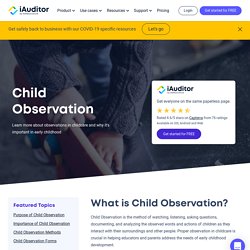

New Development Presentation. Theorist Video Links. Standards Booklet. Development Booklet. Understanding the Stages of Child Development. Is this child’s development on track?

That’s a question parents, pediatricians, educators, and caregivers ask over and over again as children grow and change. To help answer this important question, child development experts have created lots of different charts and checklists that can help you keep track of child development across several key domains: physical developmentcognitive development (thinking skills)language developmentsocial-emotional development Know that you’re going to see some variation between the lists. Researchers at Boston Children’s Hospital looked at four of the best known child development checklists and found that they mention a total of 728 different skills and abilities.
Brain Development in Teenagers. Attachment Theory. Attachment Theory By Saul McLeod, updated Feb 05, 2017 Attachment is a deep and enduring emotional bond that connects one person to another across time and space (Ainsworth, 1973; Bowlby, 1969). Behaviorism: Pavlov, Watson, and Skinner. Piaget's Theory of Cognitive Development.
Assessment and planning Cycle. What is the Purpose of Child Observation? - SafetyCulture. What is Child Observation?

Child Observation is the method of watching, listening, asking questions, documenting, and analyzing the observed words and actions of children as they interact with their surroundings and other people. Proper observation in childcare is crucial in helping educators and parents address the needs of early childhood development. This article will briefly discuss the purpose of child observation and provide some examples of child observation methods. We’ll also recommend some helpful tools that educators in daycares or preschools can use for their daily child observation reports that parents are only too happy to see when they pick up their children. What is the Purpose of Child Observation? Four Reasons Why Early Identification is Important. Supporting transitions. How Can We Help Kids With Transitions? Many children struggle with transitions, which are common triggers for behaviors that range from annoying (whining, stalling) to upsetting (tantrums and meltdowns).

There are many ways parents and teachers can help kids have an easier time with transitions — and be able to behave better—but it may take a little experimentation to find out what clicks with each particular child. These tools are useful to help kids of all stripes with transitions. But for kids with ADHD, anxiety, autism, or sensory processing, this kind of scaffolding is particularly crucial and can make the difference between a good day and a bad one. Over a period of time it can help pave the way for success.